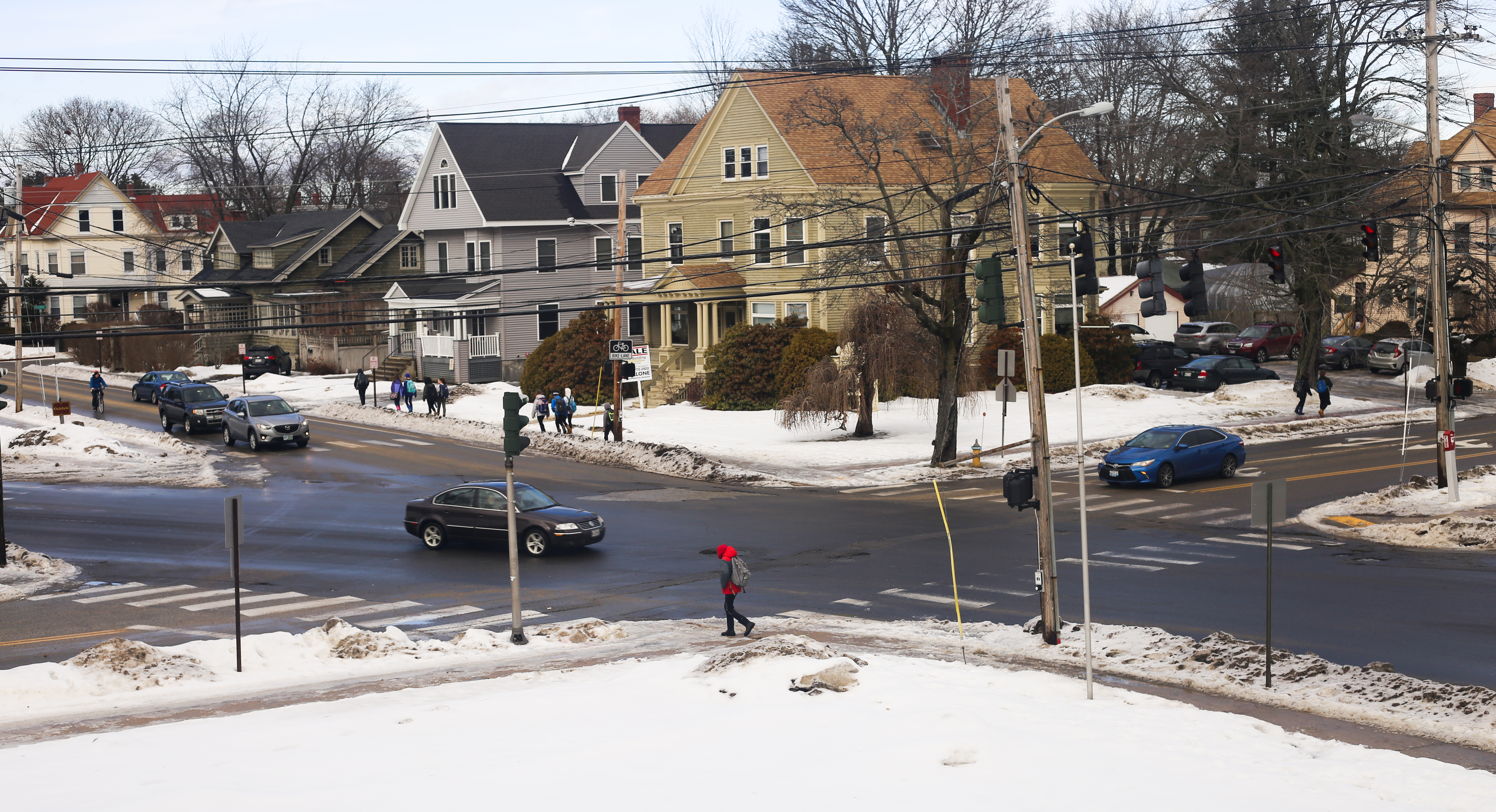Sam Margolin, Staff Writer
The city of Portland is nearing the construction of a new roundabout to replace the intersection of Brighton Avenue, Deering Avenue, and Falmouth Street near USM’s Portland campus. The Portland City Council approved the new roundabout plan in 2013 after an analysis organized by the city of Portland and Portland Area Comprehensive Transportation System (PACTS), which oversees transportation planning in the Portland area and helps secure federal funding for various projects. According to the city of Portland, the new construction is scheduled to begin in 2019 and will cost just under three million dollars. 75 percent of that cost will be paid for by PACTS with the remaining 25 percent being paid for by the city of Portland.
In addition to the new roundabout, the construction plan includes new underground utilities. This will make for complicated and noticeable construction impacts next year. As with any new major project, the costs are significant but the long-term maintenance of a roundabout will be lower than the existing intersection due to the lack of traffic lights and improved vehicle and pedestrian flow.
The project’s creation was prompted not so much by safety concerns, but by traffic and flow restrictions. According to the Maine Department of Transportation, the intersection’s danger is low to medium with only eight collisions last year and only one of those resulting in injury. The problem with the existing intersection is in part due to the lack of flow of traffic and the complicated lights. Long delays for vehicles during peak hours are the main complaint heard from motorists. Pedestrians and cyclists claim that the intersection is difficult to cross and ride through. The aging and inefficient signal equipment also cause traffic speeds to rise to a dangerous level.
For students trying to make it to class on time both in vehicles and on foot, the intersection has become a place of frustration and anger. As USM’s Portland campus is already the site of parking, traffic and flow problems, the need to ease the tension is more important than ever. Tucker Derstine, a USM graduate and a Maine Law student, is especially affected due to his need to walk from the Portland campus to the Law School on a daily basis.
“Traffic gets backed up in every direction, lights are poorly timed, and people don’t know how to correctly navigate the lanes. Plus the road surface is patched and full of potholes, it’s the worst,” Derstine said. “It is the worst intersection in Portland. I’ve been dealing with it regularly for eight years, sometimes multiple times in a day if I have to come and go from the law school.”
Derstine went on to say that Portland’s traffic problem is growing and must be solved. The intersection is now a nuisance that is too obvious to ignore. As for spending the large amount of money it will take to get the job done, Derstine said, “I don’t see any alternative. It needs to happen. I fully support this plan.”
Proponents and creators of the proposal have been investigating the best way to solve this problem for over five years now. Jeremiah Bartlett, a Transportation Systems Engineer for the Portland Department of Public Works, has been the project manager from the beginning of the design effort up until just recently. Conrad Welzel is the current project manager but Bartlett is still very much involved. Bartlett outlined some of the benefits that could be achieved through the new roundabout.
“There will be shorter crossing distances for pedestrians, and they will only have to cross one direction of traffic at a time.” Bartlett said. “Vehicles will move slowly and steadily through the intersection, so even though they aren’t going as fast, they won’t get held up at a red light for a long time.”
Bartlett also stated that because vehicles will be moving at about 15 miles per hour, cyclists can ride right in the roundabout with motorists very safely. Students will also likely find it quicker and easier to walk between the main campus and the Law School. Commuters will spend less time waiting at the intersection and walkers can easily move around the intersection without waiting a long time for pedestrian lights. This will impact not just students, but locals as well, who can do all of these things plus enjoy the improved landscaping, signage and lighting. This will make the overall aesthetic of the neighborhood more appealing and attractive.
The six-year-long journey seems arduous but has moved rather quickly compared to other large civil construction projects. The city of Portland’s proposal to extend Somerset Street, starting later this year, has been in plans for the last 20 years. Bartlett says that the challenges with significant projects like these are almost always funding, as it tends to be limited both locally and at the state and federal level.
The new roundabout has significant benefits to both USM students and the city of Portland itself. Beginning next year, commuters should expect to see improved flow at the once chaotic six-way intersection.


Added intersection to badintersections.com map